While you can successfully weld copper, for years, soldering and brazing have been the go-to joining methods when it comes to small parts and when high joint strength is required.
Brazing copper is the most common method of joining copper tubes with the use of a socket type.
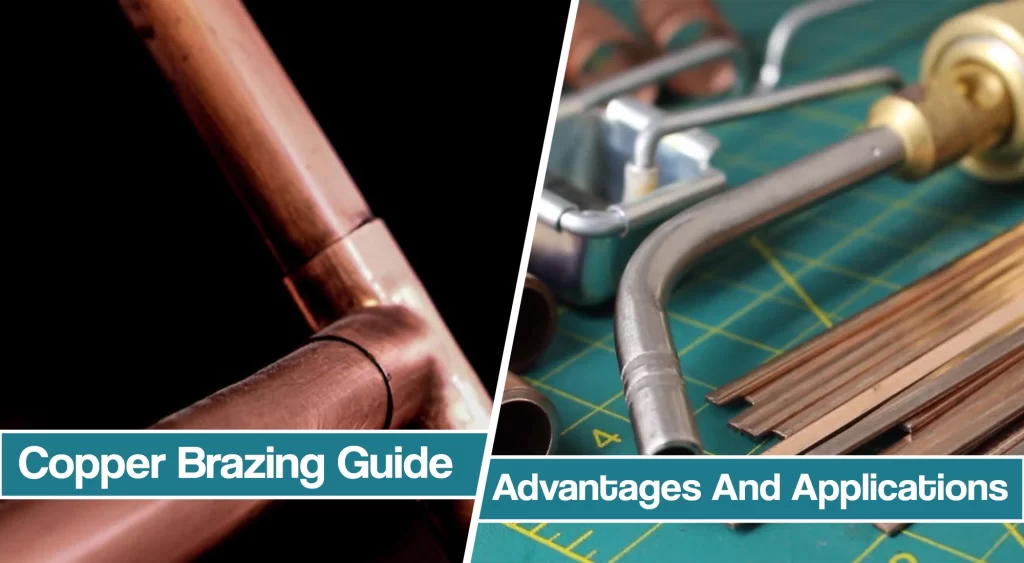
Even though copper brazing is relatively easy to master and perform, there are a couple of things that could affect the properties of the brazed joint. So, read our detailed article to learn how to complete a successful brazing process.
Brief Overview of Copper Brazing
Brazing is a metal-joining process in which metals are joined by melting filler metal which flows into the joint by capillary attraction. The heat used is high enough to reach the melting point of the brazing filler metal but not too high to affect the properties of the base metals.
Brazing copper is suitable for small parts and when high joint strength is required. Most commonly, that’s the copper pipe using a socket-type, copper, or copper alloy fitting.
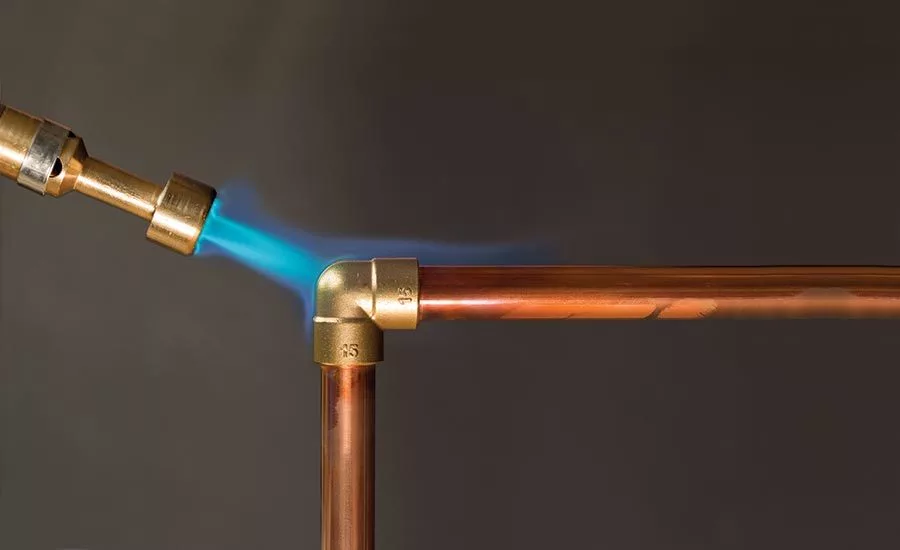
Before you consider brazing copper, you should be aware of the melting point of both base metal alloy and filler metals.
The melting point of liquidus copper is 1,981 degrees F/1082°C and 1,949 degrees solidus. Knowing the fundamentals of the brazing process, the temperature at which filler metal melts should be lower than that. As a result, both oxygen-bearing and oxygen-free copper can be brazed to produce a joint with satisfactory properties.
What Is The Difference Between Brazing And Soldering Copper?
The critical difference between soldering and brazing is the temperature required to melt the filler metal. American Welding Society (AWS) defined the border between brazing and soldering at 842ºF/450ºC but is often rounded to 840ºF.
Therefore, if the filler metal melts below 840ºF, we are talking about soldering. Meanwhile, if the filler rod melts above 840ºF, the process is brazing.
As a result of lower heat, soldered joints are somewhat weaker and less resistant to heat compared to brazed joints. However, both soldering and brazing produce weaker welds compared to welding.
When to Use Brazing to Join Copper Tube?
While brazing shows certain advantages when it comes to joining copper tube, you should consider the size of the parts, the thickness of the metal, joint configuration, number of joints, and properties of joined metals.
When it comes to the size of the parts, brazing is suitable for small pieces that require lower heating on broad surfaces. However, brazing copper is often impractical with large pieces, since you can hardly manage to heat them evenly.
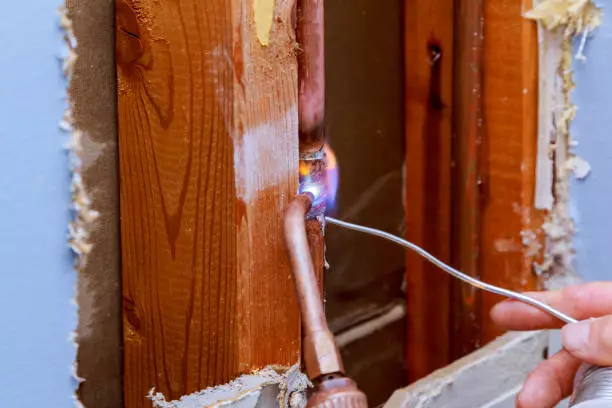
Since the brazing process provides broader heat and lower temperature, it is more suitable for joining thinner copper parts. In addition, due to the high thermal conductivity of the copper, a brazing copper tube is more suitable than welding since there is no fear of distortions and bending.
Capillary space in the straight, irregular, or tubular joints is ideal for brazing. As a result, the full-strength annealed copper brazed joint will be developed with a lap joint.
One of the most significant advantages of brazing is the ability to join dissimilar metals. As long as your filler metal is compatible with both metals, you can braze copper with other metals, such as cast iron, tool steel, stainless steel, nickel alloys, and titanium alloys.
As a result, copper brazing is widely used in fire protection, air-conditioning, refrigeration fuel gas distribution, and water supply applications.
Surface Preparation
Prior to brazing, you should remove all oxides and surface oils with abrasive cloth, pads, or brushes before joining the metals. These contaminants can interfere with the capillary attraction and joint strength, eventually resulting in failure.
Once they are thoroughly rinsed off, you can use chemical cleaners, but make sure you don’t touch the clean surface with bare hands or oily gloves.
Once you clean the parts, you should apply the flux and take care of the joint design and fitting. A joint clearance of 0.001 to 0.005 in. will ensure proper joint strength and encourage the capillary attraction of the molten filler metal.
Filler Metal Selection
As we mentioned above, while selecting the filler metal, you should make sure its melting temperature is lower than the melting point of the base metal.
The brazing temperatures for most common brazing alloys BCuP and BA are roughly between 1,150°F/621°C and 1,550°F/843°C.
- BCuP brazing Alloy (pronounced b-cup) is primarily a copper-phosphorous brazing alloy that may contain from 0%-30% Silver (Ag).
- BAg Alloy (pronounced bag) -while there are many elements found in BAg alloy, the majority of BAg alloys may contain silver content of anywhere between 24% and 93%.
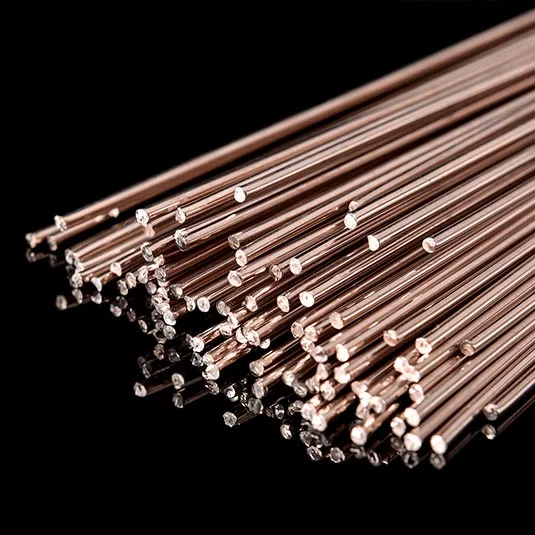
Soldering Filler Metals
Tin (Sn) is the primary element used in solder filler metals because it has an affinity for copper. However, pure tin makes weak joints, so the other filler metals are developed to joint copper piping systems.
In the past, soldering fillers consisted of 50% tin and 50% lead. These alloys showed excellent results, but they were eventually replaced due to health issues. Today’s rods, besides tin, include other elements, such as nickel, bismuth, antimony, silver, and even copper.
Copper Brazing Flux
Brazing fluxes for copper are water-based. As you braze, they dissolve and remove residual oxides from the metal surface, protect the metal from oxidation during heating, and promote the wetting of the surfaces to be joined. In addition, brazing fluxes will indicate an adequate temperature, and make sure you don’t use too much heat as they will burn.
The choice of flux or flux-covered brazing rod will differ on application. They depend on filler metal and commonly used are FB3 fluxes in different variants.
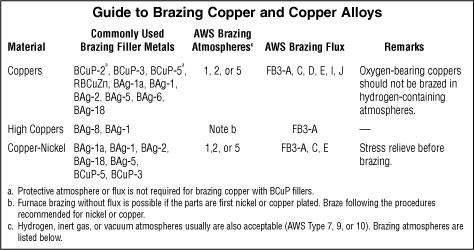
Copper Brazing Process
After you got yourself familiar with fundamentals, preparation, filler metal, and flux, it is time to braze. The copper brazing process is pretty much the same as soldering, but it differs in the heat and choice of filler and flux.
Firstly, you will need to clean the pieces you are about to braze, and once they are clean enough it is time to add the flux. You should apply a thin, even coating of flux with a brush to both surfaces, but make sure you don’t use your hands since the chemicals might react with your skin and eyes.
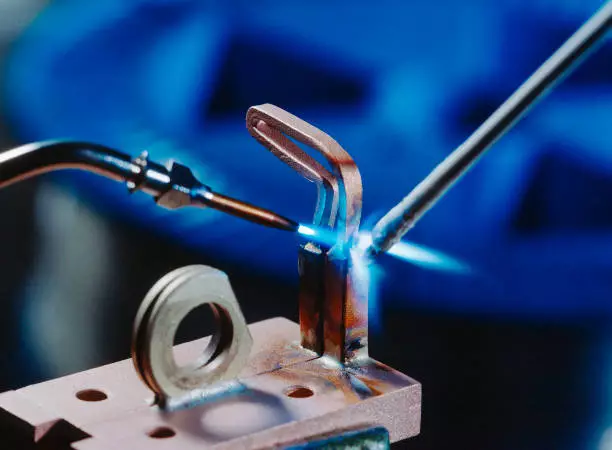
Promoting capillary attraction is crucial, and you can achieve it by ensuring joint clearance of 0.001 to 0.005 in. You can also use braze solder paste to achieve higher joint strength.
Once you completed the preparation, it is time to apply the heat. The amount of heat will vary on brazing filler metal types, and you can use simple air/acetylene or oxygen and acetylene side kits. Hold the flame perpendicular to the copper alloy tube and preheat parts, but make sure not to overheat them. Preferably use an oxyfuel torch with a neutral flame.
After you have reached an adequate temperature, touching the joint with the filler metal will make it melt. Applying the heat around the joint area will draw the filler metal into the capillary space.
Once you completed the brazing, you should allow the completed joint to cool naturally. Shock cooling with water may cause additional stress which results in cracks. When it is cool, clean off any flux residues, as they might impact the properties of the brazed joint.
What is the Difference Between Copper Brazing and Oxy-fuel Copper Welding?
While the fundamentals of brazing and oxyfuel welding seem quite the same, there is one essential difference.
During copper brazing, the moderate heat makes filler metal melt, but it doesn’t reach the melting temperature of the base metal. As a result, there are no defects and reduced properties of the base metal.
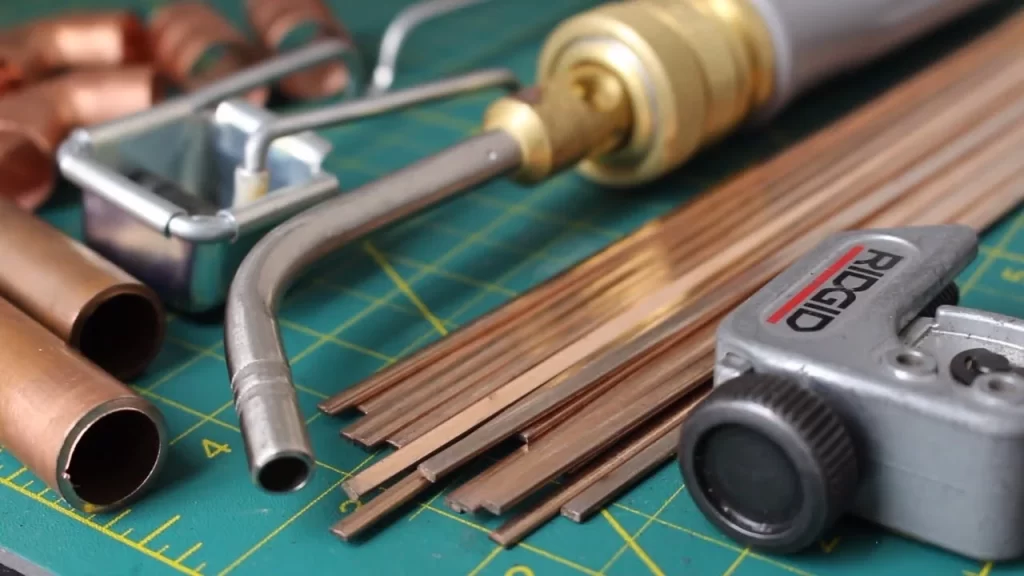
On the other hand, oxyfuel, or gas welding copper occurs at higher temperatures, where both filler materials and base metal melt and fuse. This process results in a superiorly strong, seamless piece and maximum joint strength.
Resources:
- https://www.engineeringchoice.com/copper-brazing/
- https://www.copper.org/applications/plumbing/techcorner/soldering_brazing_explained.html
- https://rexarc.com/blog/difference-between-braze-welding-and-gas-welding-explained/
- https://www.instructables.com/How-to-CORRECTLY-Braze-SILVER-SOLDER-a-Copper-Pipe/
- https://www.copper.org/applications/marine/cuni/pdf/Broschuere_Loeten_ENG.pdf





